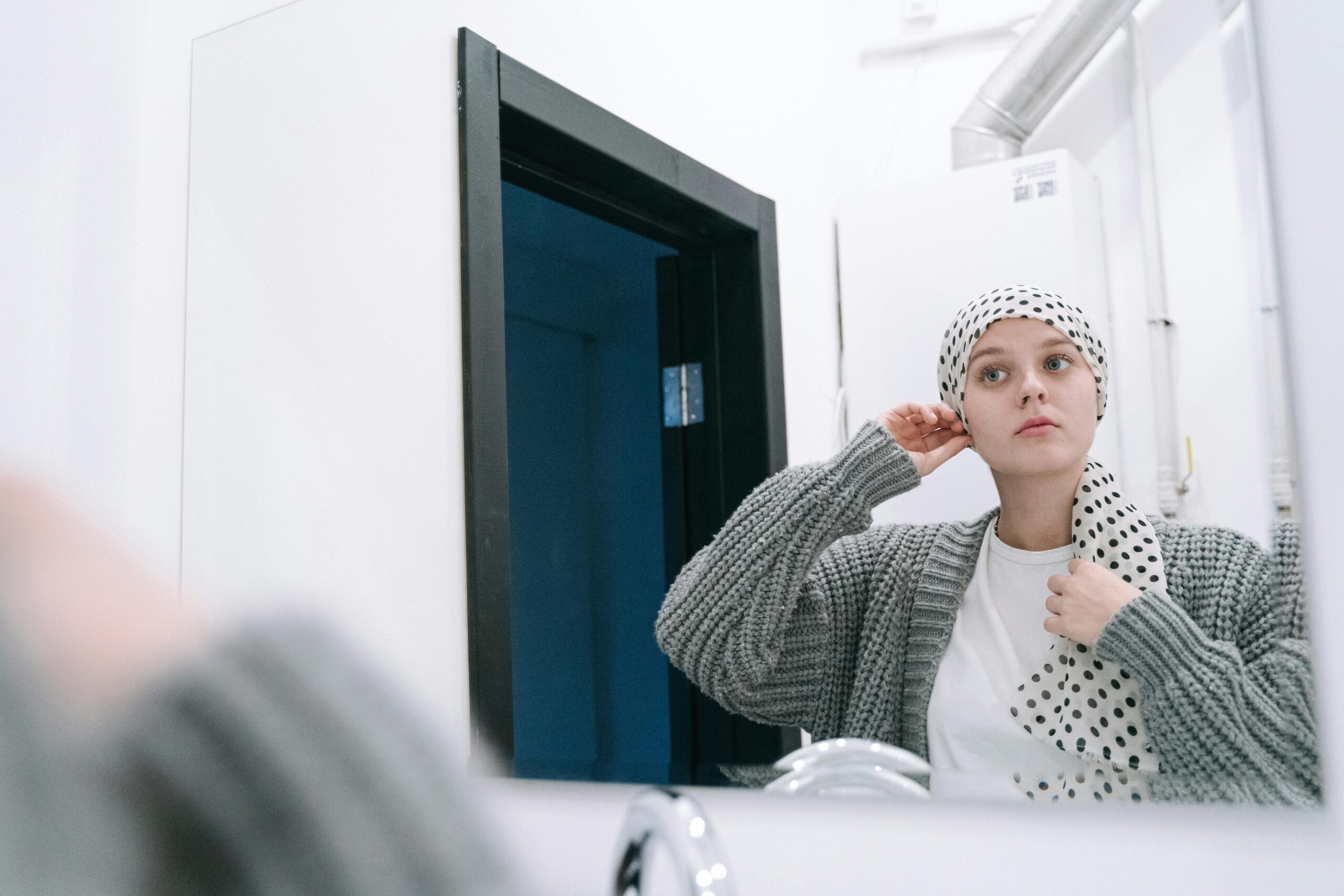Imagine watching your elderly loved one struggle to lift their arm, the frustration and pain evident with each movement. As a caregiver, this scenario can be both heart-wrenching and perplexing. Should you opt for physical therapy, or is surgery the only viable solution? Caring for an elderly loved one involves navigating a myriad of health challenges to ensure their comfort and quality of life. Among these, rotator cuff tears stand out as a common orthopedic issue that can significantly hamper mobility and daily activities. When confronted with this condition, caregivers often face the tough decision of choosing between physical therapy and surgical interventions. This comprehensive guide delves into the role of physical therapy in managing rotator cuff tears in the elderly, exploring treatment options, recovery processes, and long-term outcomes to empower you to support your loved one effectively.
What Every Caregiver Should Know
The rotator cuff comprises four muscles and their tendons that stabilize the shoulder joint, enabling a wide range of movements. As individuals age, these tendons become more prone to tears due to degenerative changes and reduced blood flow. Rotator cuff tears in the elderly can result from sudden trauma or gradual wear and tear, leading to pain, weakness, and diminished shoulder function. For caregivers, grasping the nature of rotator cuff tears, their diagnosis, and management options is crucial to providing the best possible care for their elderly loved ones.
Epidemiology: Who’s at Risk?
Rotator cuff tears are prevalent among the elderly, often linked to osteoarthritis and other degenerative joint diseases. Key risk factors include:
- Age: Individuals over 65 are more susceptible due to natural tendon degeneration.
- Activity Level: Active seniors engaged in repetitive shoulder movements or strenuous activities are at higher risk.
- Previous Shoulder Injuries: A history of shoulder injuries can predispose individuals to rotator cuff tears.
- Osteoarthritis: Degenerative changes in the shoulder joint increase the likelihood of tendon damage.
- Smoking: Tobacco use can impair blood flow to tendons, heightening the risk of tears.
Recognizing these risk factors allows caregivers to advocate for preventive measures and timely interventions, reducing the likelihood of severe shoulder problems.
Recognizing Symptoms to Promote Wellness
Early detection and effective management of rotator cuff tears hinge on vigilant monitoring of symptoms. Key signs to watch for include:
- Shoulder Pain: Persistent or sharp pain, especially during movement or after prolonged activity.
- Weakness: Difficulty lifting or rotating the arm, impacting daily tasks like dressing or reaching.
- Swelling or Tenderness: Noticeable swelling or tenderness around the shoulder joint.
- Limited Range of Motion: Difficulty in fully moving the shoulder in all directions.
- Night Pain: Discomfort that worsens at night, disrupting sleep.
Utilizing caregiver tools such as health monitoring apps or journals to track these symptoms can provide valuable insights into your loved one’s condition, facilitating timely medical consultations and interventions.
Diagnosis and Management: From Symptoms to Confirmation
Diagnosing a rotator cuff tear in the elderly requires a comprehensive approach to determine the extent and nature of the injury. The diagnostic process typically involves:
Physical Examination
A thorough physical examination assesses shoulder stability, range of motion, and specific signs indicative of rotator cuff damage, such as the Drop Arm Test, which evaluates the ability to lower the arm smoothly.
Medical History
Understanding the patient’s medical history, including previous shoulder injuries, activity levels, and the presence of osteoarthritis, is vital in diagnosing the cause and severity of the rotator cuff tear.
Imaging Studies
Imaging techniques are essential for confirming a rotator cuff tear and assessing its extent:
- Magnetic Resonance Imaging (MRI): Provides detailed images of the shoulder’s soft tissues, including the rotator cuff muscles and tendons.
- Ultrasound: A non-invasive method to visualize tendon tears and monitor changes over time.
- X-Rays: While not directly visualizing the rotator cuff, X-rays can identify bone abnormalities and osteoarthritis that may contribute to tendon damage.
Accurate diagnosis is critical for determining the most appropriate treatment strategy, whether it involves conservative management or surgical intervention.
Treatment Options: Physical Therapy vs. Surgery
When addressing rotator cuff tears in the elderly, caregivers must weigh the benefits and risks of physical therapy against surgical options. Understanding the nuances of each treatment modality is essential for making informed decisions.
Conservative Management: Physical Therapy
Physical therapy is often the first-line treatment for rotator cuff tears, especially in elderly patients with partial tears or less severe injuries. Benefits of physical therapy include:
- Non-Invasive: Avoids the risks associated with surgery, such as infections and prolonged recovery times.
- Pain Relief: Techniques like manual therapy and modalities (e.g., heat, ice) help reduce pain and inflammation.
- Strengthening Exercises: Targeting the rotator cuff muscles and surrounding muscles to support the shoulder joint and improve stability.
- Flexibility Training: Enhancing the range of motion to alleviate stiffness and improve joint function.
- Functional Training: Restoring the ability to perform daily activities with greater ease.
Surgical Interventions: Rotator Cuff Repair
In cases where conservative management fails or the tear is severe, surgical options may be considered:
- Rotator Cuff Repair: A surgical procedure to reattach the torn tendon to the bone. Benefits include:
- Immediate Relief: Rapid alleviation of symptoms like pain and weakness.
- Restoration of Shoulder Function: Enhances mobility and stability in cases of significant tendon damage.
- Reverse Shoulder Arthroplasty: Particularly beneficial for massive cuff tears and when accompanied by arthritis. It improves pain and function scores, making it an effective surgical option.
However, surgery carries inherent risks, particularly in elderly patients:
- Infection: Although rare, infections can complicate the recovery process.
- Prolonged Recovery: Extended healing times may limit mobility and independence.
- Risk of Re-tear: There is a possibility of the tendon tearing again after surgery.
Rotator Cuff Repair vs. Non-Surgical Management: Long-Term Implications
Recent advancements emphasize the importance of tendon preservation over resection to prevent long-term complications like osteoarthritis. Rotator cuff repair has emerged as a more favorable option, especially for specific tear types and patient profiles.
Advantages of Rotator Cuff Repair:
- Preservation of Tendon Function: Maintains the natural biomechanics of the shoulder, reducing the risk of osteoarthritis.
- Better Long-Term Outcomes: Studies indicate lower rates of joint degeneration compared to tendon resection.
- Enhanced Joint Stability: Repairs restore the tendon’s load-distributing capabilities.
Challenges of Rotator Cuff Repair:
- Technical Complexity: Requires precise surgical techniques and expertise.
- Longer Rehabilitation: Recovery may take longer compared to non-surgical treatments, necessitating an extended physical therapy regimen.
- Higher Initial Costs: Surgical repairs can be more expensive upfront, though they may prove cost-effective in the long run by preventing degenerative changes.
Given these factors, rotator cuff repair is increasingly recommended, particularly for elderly patients with significant tendon damage and those who remain highly active.
Choosing the Right Treatment
Deciding between physical therapy and surgery involves considering several factors:
- Severity of the Tear: Partial tears may respond well to physical therapy, while complex or full-thickness tears might require surgery.
- Overall Health: Elderly patients with comorbidities may benefit more from conservative treatments to minimize surgical risks.
- Activity Level: Active seniors may prefer surgery for quicker symptom relief, while less active individuals might thrive with physical therapy.
- Patient Preferences: Involving your loved one in the decision-making process ensures their preferences and comfort are prioritized.
What to Expect During Physical Therapy
Embarking on a physical therapy regimen involves a structured yet adaptable routine tailored to the elderly individual’s specific needs. Here’s what caregivers can expect:
Initial Assessment
A licensed physical therapist will conduct a comprehensive assessment, evaluating the extent of the rotator cuff tear, shoulder stability, and overall mobility. This assessment forms the foundation of a personalized treatment plan.
Personalized Treatment Plan
The treatment plan typically includes:
- Strengthening Exercises: Focused on building the rotator cuff muscles and surrounding musculature to provide better support and reduce strain on the shoulder.
- Flexibility Training: Incorporating stretching exercises to improve the range of motion and alleviate stiffness.
- Functional Training: Engaging in activities that mimic daily tasks to restore functional abilities.
- Manual Therapy: Techniques such as massage and joint mobilization to reduce pain and improve joint function.
- Pain Management Techniques: Utilizing modalities like heat, ice, or electrical stimulation to manage pain and inflammation.
Session Structure
Physical therapy sessions are typically conducted 2-3 times a week, each lasting about 30-60 minutes. The frequency and intensity of sessions are adjusted based on the patient’s progress and comfort level.
Progress Monitoring
Regular assessments help track improvements in strength, flexibility, and pain levels. Adjustments to the treatment plan are made as needed to ensure optimal outcomes.
Home Exercise Program
Caregivers are often provided with a set of exercises to perform at home, reinforcing the progress made during therapy sessions and promoting continuous improvement.
Duration of Physical Therapy
The length of physical therapy varies depending on the severity of the tear, the patient’s overall health, and their response to treatment. Typically, physical therapy may last from several weeks to a few months. Key considerations include:
- Severity of the Tear: More significant tears may require longer therapy durations to achieve optimal recovery.
- Patient’s Health Status: Elderly patients with additional health concerns may need a more gradual and extended therapy approach.
- Response to Treatment: Regular monitoring allows therapists to tailor the duration and intensity of therapy based on the patient’s progress.
Long-Term Commitment
Consistency is crucial for successful recovery. Adhering to the therapy schedule and performing home exercises diligently can significantly enhance recovery outcomes and prevent future injuries.
Advances in Treatment: Preserving Tendon Function
Recent research emphasizes the importance of tendon preservation over resection to prevent long-term complications like osteoarthritis. Advances in treatment include:
- Minimally Invasive Arthroscopic Techniques: These techniques reduce surgical trauma, promote quicker recovery, and preserve more of the tendon tissue.
- Tissue Engineering: Innovations in regenerative medicine aim to restore tendon function and enhance joint health, offering promising outcomes for elderly patients.
- Rotator Cuff Repair Techniques: Improved surgical methods focus on repairing the tendon rather than removing damaged tissue, maintaining joint integrity and reducing the risk of osteoarthritis.
Rotator Cuff Reconstruction and Regeneration
Beyond traditional surgical methods, rotator cuff reconstruction and regenerative therapies are gaining traction. These approaches aim to not only repair but also regenerate the tendon tissue, offering a more sustainable solution to tendon injuries.
- Tendon Grafts: Involves transplanting a tendon from another part of the body or a donor to replace the damaged one.
- Biological Enhancements: Utilizing growth factors or stem cells to promote healing and regeneration of the tendon tissue.
These advanced techniques aim to restore the tendon’s natural function, thereby improving shoulder biomechanics and reducing the likelihood of osteoarthritis development.
Long-Term Outcomes and Research Insights
Physical Therapy vs. Surgery: Long-Term Shoulder Function
A pivotal study compared the long-term effectiveness of exercise-based physical therapy against surgical rotator cuff repair in elderly patients. Key findings include:
- Shoulder Function: Over a 5-year follow-up period, physical therapy was found to be non-inferior to surgery in terms of patient-reported shoulder function. Both groups showed significant improvements, with the surgery group experiencing a slightly higher mean improvement.
- Osteoarthritis Progression: Both treatment groups exhibited similar rates of osteoarthritis progression, indicating that physical therapy does not increase the risk of joint degeneration compared to surgery.
- Re-tear Rates: Approximately 20% of patients in the physical therapy group eventually required surgery due to persistent shoulder symptoms. However, even with these additional surgeries, physical therapy remained a viable initial treatment option.
Rotator Cuff Repair vs. Non-Surgical Management: Long-Term Implications
Integrating insights from recent orthopedic research, it’s evident that while surgical rotator cuff repair has been a widely performed procedure, its long-term benefits over conservative management are nuanced. Rotator cuff repair offers superior long-term outcomes by preserving tendon function and reducing the risk of osteoarthritis, especially in active elderly patients.
Repair Benefits: Enhanced joint stability, preservation of tendon function, and lower long-term degeneration rates.
Non-Surgical Management Benefits: Avoids surgical risks, promotes gradual and natural healing, and maintains overall health without invasive procedures.
Implications for Caregivers
The combined findings from recent studies suggest that exercise-based physical therapy should be the preferred initial treatment for rotator cuff tears in the elderly. This approach minimizes surgical risks, promotes shoulder function, and does not adversely affect the long-term health of the shoulder joint. When surgery becomes necessary, opting for rotator cuff repair over tendon resection can further enhance long-term outcomes.
Supporting Your Elderly Loved One’s Recovery Journey
Deciding on the best course of action for an elderly person’s rotator cuff tear involves careful consideration and collaboration with healthcare professionals. Physical therapy offers a non-invasive option that can lead to full recovery, especially when combined with consistent health monitoring and the use of caregiver tools.
Involving Yourself in Therapy
Active participation in your loved one’s therapy can significantly enhance their recovery:
- Attend Therapy Sessions: Whenever possible, accompany them to physical therapy sessions to stay informed about their progress and treatment plan.
- Encourage Adherence: Motivate your loved one to follow through with prescribed exercises and attend all scheduled sessions.
- Monitor Progress: Use caregiver tools to track improvements in strength, flexibility, and pain levels, providing valuable data for ongoing treatment adjustments.
Utilizing Caregiver Tools
Incorporating health monitoring into daily routines can boost the effectiveness of therapy:
- Health Tracking Apps: Use digital tools to log pain levels, mobility, and exercise completion, offering a comprehensive view of your loved one’s recovery.
- Journals: Maintain a physical or digital journal to record daily observations, facilitating communication with healthcare providers.
- Appointment Reminders: Utilize calendar apps or reminder systems to ensure all therapy sessions and medical appointments are attended promptly.
Maintaining Open Communication
Effective communication with healthcare providers ensures that the treatment remains aligned with your loved one’s needs:
- Regular Updates: Keep therapists and doctors informed about any changes in symptoms or concerns.
- Feedback: Provide feedback on what’s working or causing discomfort to allow for timely adjustments to the therapy plan.
- Collaborative Decision-Making: Engage in discussions about potential treatment modifications or additional support services as needed.
Leveraging Support Tools for Optimal Wellness
Digital tools offer innovative solutions to support caregivers in managing their loved one’s health effectively. While specific tools like advoMedix are not mentioned in the context of rotator cuff tear management, general caregiver tools can still play a crucial role.
Health Monitoring Apps
Apps designed for health tracking can help caregivers:
- Log Symptoms: Record pain levels, swelling, and mobility issues in real-time.
- Track Progress: Visualize improvements or identify patterns in symptoms over time.
- Share Data: Easily share health data with healthcare providers for informed decision-making.
Educational Resources
Accessing reliable information is vital for understanding rotator cuff tears and their management:
- Medical Websites: Refer to reputable sources like the American Academy of Orthopaedic Surgeons (AAOS) or Mayo Clinic for comprehensive information.
- Webinars and Online Courses: Participate in virtual events to stay updated on the latest treatment advancements and caregiving strategies.
- Support Communities: Engage with online forums and support groups to share experiences and gain insights from other caregivers.
Organizational Tools
Staying organized ensures that all aspects of your loved one’s care are meticulously managed:
- Digital Calendars: Schedule therapy sessions, medical appointments, and medication reminders.
- Document Storage: Keep all health-related documents, including medical reports and treatment plans, in one accessible digital location.
Empowering Caregivers: Building a Supportive Network
Being a caregiver for an elderly loved one with a rotator cuff tear is both rewarding and challenging. Building a strong support network and utilizing available resources can make a significant difference in your caregiving journey.
Connecting with Support Groups
Joining support groups allows you to connect with other caregivers facing similar challenges. Benefits include:
- Emotional Support: Sharing experiences can alleviate feelings of isolation and provide comfort.
- Practical Advice: Gain insights and strategies for effective caregiving from those who understand the journey.
- Community Engagement: Participate in group activities and discussions that promote a sense of belonging.
- Local Support Groups: Meet other caregivers in your community through hospitals, clinics, or community centers.
- Online Communities: Engage with caregivers globally through platforms like Facebook, Reddit, and dedicated caregiving forums.
- Caregiver Networks: Connect through nonprofit organizations focused on caregiver support and resources.
Accessing Online Resources
Online platforms offer a wealth of information and tools to support caregivers:
- Educational Websites: Visit reputable sites like the National Institute on Aging (NIA) or Arthritis Foundation for comprehensive information on shoulder health and caregiving.
- Webinars and Virtual Conferences: Participate in online events to stay informed about the latest research and treatment options.
- Informative Articles and Blogs: Read medical journals, caregiver blogs, and health organization articles for diverse perspectives and practical tips.
Utilizing these resources ensures you are well-informed and equipped to make the best decisions for your loved one’s health.
Advocating for Your Loved One’s Needs
Empowering yourself with knowledge enables you to advocate effectively for your loved one’s healthcare needs, ensuring they receive necessary support and resources.
Engage in Open Communication with Healthcare Providers
- Prepare for Appointments: Write down questions and concerns before medical visits.
- Seek Second Opinions: If uncertain about a diagnosis or treatment plan, consult another specialist.
- Stay Informed: Understand the diagnosis, treatment options, and potential outcomes to engage in informed discussions.
Ensure Educational and Social Support
- Specialized Support: Ensure access to specialized services if rotator cuff tears affect cognitive or physical abilities.
- Community Engagement: Encourage participation in community activities that promote social interaction and emotional well-being.
Utilize Available Resources
- Nonprofit Organizations: Organizations like the Arthritis Foundation offer resources, advocacy tools, and community connections.
- Legal Assistance: Seek legal advice to protect your loved one’s rights in medical or caregiving settings.
- Financial Support: Explore grants, insurance options, and financial assistance programs to manage treatment costs.
By advocating for your loved one’s needs, you ensure comprehensive care and support, enabling them to lead fulfilling lives despite rotator cuff tear challenges.
Educational Support and Tools
Understanding rotator cuff tears and their impact on your loved one’s daily life is essential for effective caregiving. Educate yourself about the condition, treatment options, and caregiving strategies to provide the best possible support.
Develop a Knowledge Base
- Read Books: Consult medical and caregiving books focused on shoulder health and orthopedic conditions.
- Attend Seminars: Participate in educational seminars or workshops on rotator cuff tears and shoulder rehabilitation.
- Engage with Online Resources: Utilize online platforms for up-to-date information and expert advice.
Use Educational Tools
- Health Monitoring Apps: Tools like health tracking apps can provide access to resources and articles related to rotator cuff tear management.
- Interactive Guides: Online interactive guides and tutorials can help you understand the therapy exercises and rehabilitation processes.
Stay Updated
- Latest Studies: Keep abreast of the latest research and advancements in rotator cuff tear treatment to ensure your loved one receives the most current care.
- Treatment Innovations: Understand new treatment modalities and their benefits to make informed decisions about your loved one’s health plan.
By prioritizing educational support, you help your loved one navigate the complexities of rotator cuff tears and make informed treatment and care decisions.
Prioritizing Self-Care
Caring for a loved one with a rotator cuff tear can be physically and emotionally demanding. Prioritizing your own well-being is essential to maintain the energy and resilience needed to support your loved one.
Take Breaks
Ensure regular breaks to rest and recharge, preventing caregiver burnout. Schedule downtime to relax and engage in activities that rejuvenate you.
Engage in Hobbies
Pursue activities that bring joy and relaxation, balancing caregiving stresses. Whether it’s reading, gardening, or crafting, hobbies can provide a much-needed respite.
Seek Support
Lean on friends, family, or professional support services when needed, recognizing that seeking help is a sign of strength. Consider joining caregiver support groups or seeking counseling to manage stress effectively.
Balancing emotional well-being ensures that both you and your loved one can navigate rotator cuff tear challenges with resilience and a positive outlook, fostering a supportive and nurturing environment.
Promoting Positive Coping Mechanisms
In addition to physical therapy, incorporating positive coping mechanisms can enhance the recovery experience for your elderly loved one.
Mindfulness and Relaxation
Practices like meditation, deep breathing, or gentle yoga help manage stress and promote emotional well-being. Encourage your loved one to engage in these activities to foster a sense of calm and focus.
Physical Activity
Encourage enjoyable physical activities, such as walking or light stretching, to boost mood and reduce anxiety. Tailor activities to their comfort level and physical capabilities to ensure safety and effectiveness.
Creative Outlets
Activities like drawing, writing, or playing music provide healthy outlets for expressing emotions and processing experiences. Creative pursuits can enhance mental well-being and provide a sense of accomplishment.
Balancing emotional well-being ensures that both you and your loved one can navigate rotator cuff tear challenges with resilience and a positive outlook.
Conclusion: Your Role in Supporting Your Loved One’s Health Journey
Understanding rotator cuff tears and utilizing effective treatment options are crucial steps in supporting your elderly loved one’s health. By recognizing symptoms, engaging with healthcare professionals, and leveraging caregiver tools, you ensure timely intervention and effective condition management. Recent advancements in rotator cuff repair and regenerative therapies further enhance treatment efficacy, offering better long-term outcomes and reducing the risk of osteoarthritis.
Your journey as a caregiver is filled with challenges, but with dedication and the right resources, you can make a significant difference in your loved one’s well-being.
Take Action Today:
- Start Tracking: Use a health monitoring tool to keep detailed records of your loved one’s symptoms and progress.
- Consult Your Doctor: Discuss with healthcare providers to determine the best treatment strategy.
- Stay Informed: Educate yourself about rotator cuff tears and other potential health issues to stay prepared and proactive.
Your commitment to your elderly loved one’s health is invaluable. Embrace these tools and practices to ensure a healthy and happy future for them.
References
- Journal of the American Medical Directors Association. (2008). Nonsurgical Treatment for Rotator Cuff Injury in the Elderly. DOI: 10.1016/j.jamda.2008.05.003
- Maturitas. (2019). Management of Rotator Cuff Tears in the Elderly Population. DOI: 10.1016/j.maturitas.2019.01.016
- American Academy of Orthopaedic Surgeons (AAOS). Meniscal Tears. Retrieved from AAOS
- Mayo Clinic Staff. (2022). Meniscal Tear. Mayo Clinic. Retrieved from Mayo Clinic
- National Institute on Aging (NIA). Osteoarthritis. Retrieved from NIA
- Arthritis Foundation. Meniscus Tear. Retrieved from Arthritis Foundation
Disclaimer: Digital Elevate Partners and digitalelevatepartners.com are not affiliated with the U.S. Department of Veterans Affairs (VA), nor are we certified as Veteran Service Officers (VSOs). Additionally, we are not licensed medical professionals. The content provided on our website and platforms, including opinions, information, and recommendations, is for informational purposes only and should not be considered medical, legal, or veteran-related advice, diagnosis, or treatment. Always seek the advice of a licensed healthcare provider or qualified professional for any medical, legal, or veteran service concerns or decisions. Reliance on any information provided by Digital Elevate Partners is solely at your own risk.




